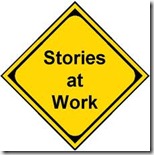by Diane Holmes, Marketing-Zone: Marketing Yourself and Your Book
This is the seventh in a series on Author Branding. Previous articles include:
1. Author Branding vs. an Army of Writers
2. The Author’s Branding Manifesto
3. The Gleam in Your Author Brand (Brand Building Technique #1)
4. Storytelling Your Author Brand (Brand Building Technique #2)
5. Yes, Your Book Is Part of Your Brand (part 1) (Brand Building Technique #3)
6. Yes, Your Book Is Part of Your Brand (part 2) (Brand Building Technique #4)
—-
Your Reputation
When you consider your brand as an author, you’re participating in creating the story of your career and how you interact with your readers.
If you could be in the room with every reader, every time they thought about you and your books, then branding would be easy. But readers think about you even when you’re not really there. Such is the magic of the author-reader experience: your words go out into the world on their own.
-Chris Garrett, Work on Your Branding
Simply put, the largest and most important aspect of your brand is your reputation.
Famously, whatever is said about you when you are not in the room….
What do you want people to think about you? What do you want people to say about you?
In this series, we’ve been looking at ways to uncover what you want your brand to be, and how you want your reader to think about you as an author beyond one single book. You’re starting to come up with ideas, but now you need to look critically at what you’ve identified.
It’s at this point that your brand can really fail to serve you, because while you’ve come up with things that are true, you may not have come up with what you’re actually communicating to your readers or what differentiates you from other authors, other books, and other reading experiences.
So, let’s look at your reputation.
Brand Building Technique #5 – Reputation Assessment
For each of the following groups, ask two questions:
1. What is your reputation right now? (What they say about you and your work when you’re not standing there in front of them.)
2. What do you want your reputation to be in the future?
- Readers
- Fellow Writers (in your genre and outside your genres, new authors as well as authors you’ve admired for years)
- Industry Pros
- Booksellers and Librarians
- Reviewers
- Media & Speaking Outlets
Do you have as lot of blanks? That’s important to know.
Over the next few weeks, we’ll be pulling together all the Author Branding concepts discussed so far, looking at real Author Brands out there, and testing them to see if they actually work.
One of the biggest questions when it comes to Author Branding is what makes an Author Brand “road worthy” and what causes a brand to fall short?
Here’s a sneak peak at the criteria we’ll be using:
- Original
- Relatable
- Long Term
- Mythic
- Punchy
- Emotional
- Authentic
- Effective
- Strong (able to support the weight of a career and reader interest)
- Able to capture lightning in a bottle
See you then!
—
 Diane writes two columns for Freelance-Zone: Fiction-Zone: Leaps in Fiction Mastery and Marketing-Zone:Marketing-Zone: Marketing Yourself and Your Book.
Diane writes two columns for Freelance-Zone: Fiction-Zone: Leaps in Fiction Mastery and Marketing-Zone:Marketing-Zone: Marketing Yourself and Your Book.
She’s the Founder and Chief Alchemist of Pitch University – “Learn to pitch your book from the AGENTS and EDITORS who make their living at it. Learn. Pitch. Sell.”




